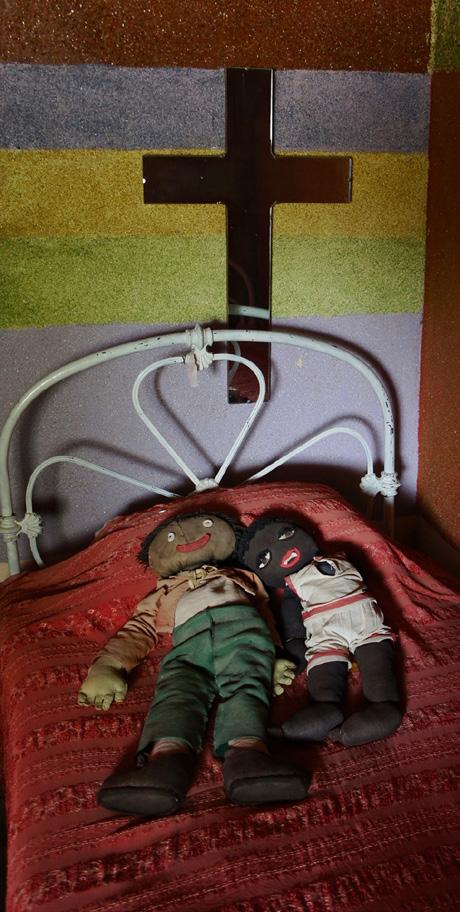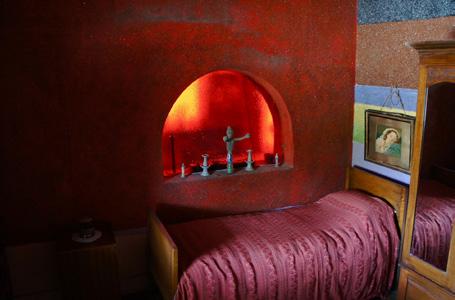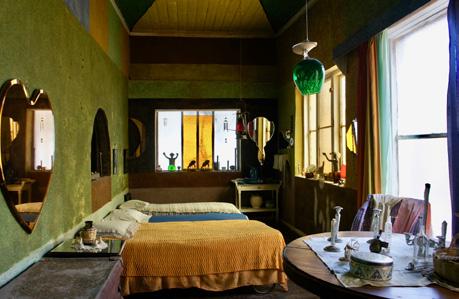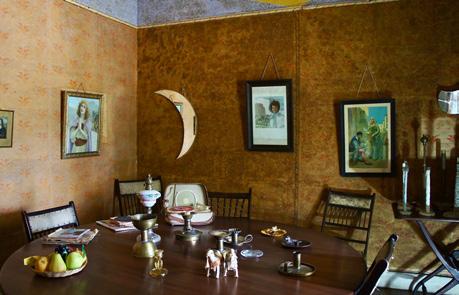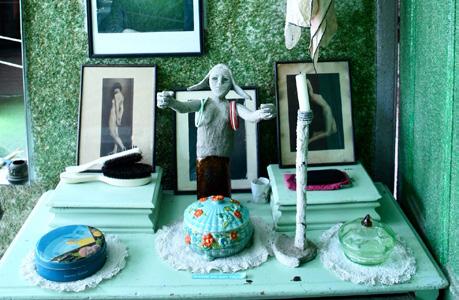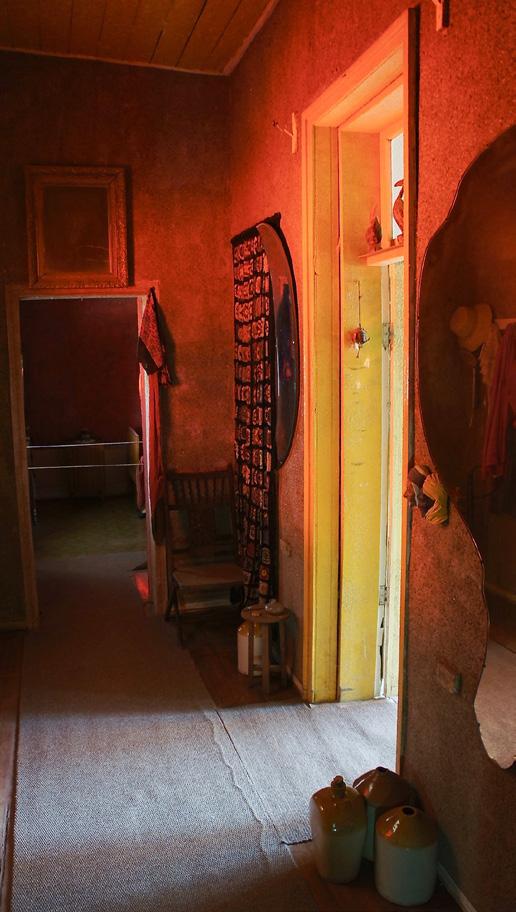DRAMATIC ARTS
GRADE 11
PRESCRIBED TEXT GUIDE 2
THE ROAD TO MECCA
BY ATHOL FUGARD
Owned and published by Optimi, a division of Optimi Central Services (Pty) Ltd.
7 Impala Avenue, Doringkloof, Centurion, 0157 info@optimi.co.za www.optimi.co.za
© Optimi
Apart from any fair dealing for the purpose of research, criticism or review as permitted in terms of the Copyright Act, no part of this publication may be reproduced, distributed, or transmitted in any form or by any means, electronic or mechanical, including photocopying, recording, or any information storage and retrieval system without prior written permission from the publisher.
The publisher has no responsibility for the persistence or accuracy of URLs for external or third-party internet websites referred to in this publication, and does not guarantee that any content on such websites is, or will remain, accurate or appropriate.
There are instances where we have been unable to trace or contact the copyright holder. If notified, the publisher will be pleased to rectify any errors or omissions at the earliest opportunity.
Reg. No.: 2011/011959/07
The road to Mecca by Athol Fugard
Learning aims
After completing this section (in this guide and in the Learner Book), you will:
● Be able to analyse The Road to Mecca according to the dramatic principles
● Understand the context and background in terms of sociopolitical, religious, economic, artistic and historical events relevant to the play.
● Know more about the design elements of staging this play and the placement of the text on stage (direction and design)
Study
Read the text of Romeo and Juliet (as many times as possible) and study the notes in this guide.
Introduction
Important terminology
Term
idolatry
SampleDefinition
The worship of an idol as though it were God; extreme admiration, love or reverence for something or someone Mecca
The holy city of the religion of Islam; the symbol of a spiritual or personal goal
pagan The original pagans were followers of ancient religion that worshipped several gods. Today, ‘pagan’ is used to describe someone who doesn’t go to synagogue, church or mosque (doesn’t prescribe to organised religion). It could be that they worship several gods at once or they have no interest in a god at all.
pilgrimage A pilgrimage is a journey, often into an unknown or foreign place, where a person goes in search of new or expanded meaning of themself, others, nature or a higher good, through the experience. It can lead to a personal transformation, after which the pilgrim returns to their daily life.
screenplay A script of a film, including acting instructions and scene directions.
About the playwright
Athol Fugard
SampleAthol Fugard is a South African writer, actor and director who has created over thirty plays. He is famous for his political plays that address and tackle the racial segregation of apartheid. He was born in the Eastern Cape in 1932 and grew up in Port Elizabeth. His father was a musician of British descent and his mother was an Afrikaner who managed a tea shop. He studied at the University of Cape Town and had numerous jobs after completing his studies. He worked as a deckhand on a ship, as a journalist for the SABC and later as a clerk in the Native Commissioners’ Court. It was during his time there that he experienced the inhumanities of the apartheid system and it created a big impression on him.
Athol Fugard
Source: https://bit.ly/3k4oat1
In 1956 he married actress Sheila Meiring. Together, they founded the theatre workshop The Circle Players. He also worked as actor in Johannesburg and it was with this experience that he started writing plays. These plays dramatised the effects the political system had on ordinary people. Plays like Sizwe Bansi is Dead and Statements after an Arrest under the Immorality Act documented the lives of black South Africans and actively criticised apartheid. The Security Police started spying on Fugard and his theatre.
The Blood Knot won him international attention as a playwright, however all the attention was not positive. After the first performance the piece was banned in South Africa, limitations were placed on his movements and his passport was taken away. It took an international protest for him to be allowed to travel to England to direct one of his plays. During the late 1960s he formed another drama group, The Serpent Players. It consisted of a group of black actors who had full-time jobs as teachers, clerks and industrial workers. The group got its name from their first venue, a former snake pit in a zoo (serpent refers to snake). Fugard carried on writing plays that criticised and tackled apartheid and segregation during these years, and in doing so gained popularity and interest in America and Europe. During the 1980s, Fugard moved to America. He worked there as a playwright and professor. The Road to Mecca was written in 1984 and first performed in 1985 to much acclaim at the Lyttelton Theatre in London. Fugard directed this production. His debut as film director was in 1992 when he co-directed the adaptation of The Road to Mecca with Peter Goldsmid, who also write the screenplay.
Sample
The foreword to The Road to Mecca reveals Fugard’s motivation and his connection to the story. Athol Fugard was, like Helen Martins, born in the Karoo, 25 kilometres from Nieu-Bethesda. In the foreword, Fugard relates his experience of the town and the artist. Two years before Martins’ suicide, Fugard had bought a home in NieuBethesda and he became aware of Helen through the locals, but never made a personal connection with her. After her death, Fugard was intrigued by the story but not yet completely sold on writing it. It was not until an actor politely remarked to Fugard that his roles for women were wonderful, but that he never had two women in the same play and questioned when he would. Fugard realised that he indeed had not had two women together on a stage as the focus of the whole event. At around the same time, the playwright learned of Helen’s significant friendship with a much younger woman. After meeting the woman and seeing a photo of her with Helen, Fugard was inspired to write the play.
Overview
Based on the real-life story of Helen Martins, a South African woman whose home ‘The Owl House’ is still open to the public. Fugard’s play explores themes of freedom versus oppression, trust and conflict between the self and the community.
The play takes place in 1974 at Miss Helen’s home in Nieu-Bethesda in the Karoo. After Helen’s husband died 15 years earlier, she began filling the house with light and colour, and started a sculpture garden of her creations. The play features three characters: Miss Helen, in her late sixties; her friend Elsa Barlow, is in her twenties; and local pastor, Marius Byleveld.
Setting
Summary
https://bit.ly/3EDqX4n
The Road to Mecca is set in 1974 during apartheid in South Africa. The action takes place in the Karoo, specifically in Helen’s house in Nieu-Bethesda.
The play opens with Elsa unexpectedly arriving from Cape Town. She has travelled to the Karoo to see Miss Helen after receiving a worrying letter from her. At first, the two talk about lighter matters and, while talking, Elsa notices burn marks on one of the walls – which Helen says are from one of the lamps smoking. Elsa also notices new curtains. Helen changes the subject by asking Elsa about her life. Elsa reveals that she just broke up with a man she was seeing and says that the experience has made her realise that ‘trust’ is the ‘big word’, rather than ‘love’. The women express their trust in each other and recall the first time they met, after Elsa came upon Helen’s house – which Helen calls her ‘Mecca’ – and Helen invited her inside.
Sample
Elsa brings up the letter and Helen admits she regrets sending it in the first place. Elsa reads the letter aloud and reveals that Helen indicated that her health was declining, and expressed thoughts of depression and suicide. She also wrote that she was losing ‘the house, my work, my Mecca’ and asked Elsa to help. Helen goes on to tell Elsa that Marius and some of the other community members are trying to get her to move to an old-age home, and that Marius was coming by that evening to pick up the paperwork for the move. Helen also tells Elsa that her letter was about ‘darkness’ and that she is dealing with depression.
Act II starts with the arrival of Marius later that evening. Marius says that Helen has a room at the old-age home if she wants it. Elsa accuses Marius of trying to bully and blackmail Helen into signing the application form. In response Marius reveals to Elsa that Helen’s burned wall is actually the result of a candle falling and starting a fire,
and that Helen made no attempt to put it out. Elsa gets angry at Helen for lying to her and they have an argument.
Pictures of Helen Martins’ actual house
Source:
Marius and Elsa then argue over Helen. Elsa says that Helen’s sculptures express freedom, and this freedom is why she comes to visit her – because Helen ‘challenges’ her and is ‘the first truly free spirit I have ever known’. Marius protests, telling Helen that she has abandoned the faith and her town for her mecca, and is alone and ostracised as a result. Helen, he says, is the opposite of free because she is trapped now finally in the nightmare this house has become.
Helen then reveals that the idea for her ‘Mecca’ first came to her on the night of her husband’s funeral, after Marius came over and closed the curtains for her. Helen, depressed, sat and watched a candle, waiting for the ‘darkness’ when it went out, but instead the ‘small, uncertain little light seemed to find its courage again’ and got ‘brighter and brighter’. The candle sparked Helen’s vision of her ‘Mecca’ and inspired her to start creating it. She recounts this story as Elsa lights candles around the room, then gives Marius back the application form.
Marius leaves, defeated. Helen has realised that ‘the road to my Mecca was one I had to travel alone’, but it is now finished ‘and with it […] the only real purpose my life has ever had’, suggesting that she is ready to die. Elsa then expresses her own loneliness and reveals to Helen that she’s had an abortion. As the play ends, she again expresses her love for Helen but whether the same trust remains between them, is left ambiguous.
https://bit.ly/3EDqX4n



